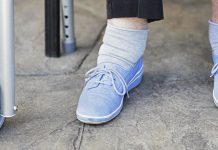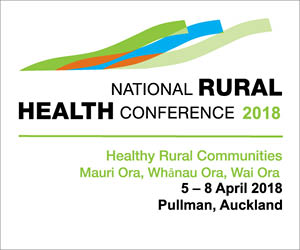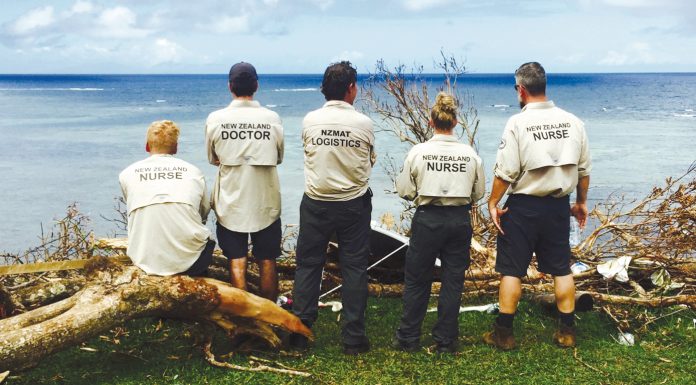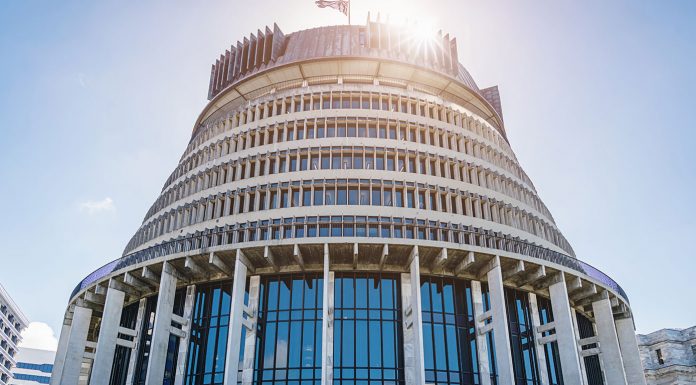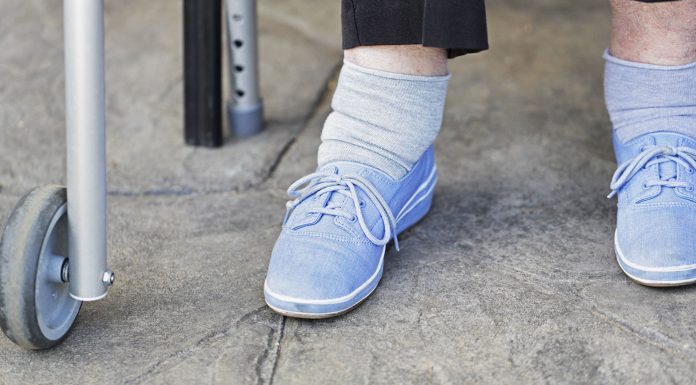“Are you a boy or a girl?” The answer for some people is neither, as an estimated 1–2 per cent of people are born intersex.
Intersex is a term used to describe people who are born with sexual anatomy and/or chromosomes that are not typically male or female. These variations are differences in sexual development that have occurred throughout history and across all cultures.
Our sex, be it male, female or intersex, is usually defined at birth by health professionals. In Aotearoa New Zealand, sex can be officially designated as ‘indeterminate’ on birth certificates.
Intersex describes more than 30 different sex-related conditions, the vast majority of which result in no health problems. Some people are born with genital differences, some people are born with internal organs that are typically male, while their external genitals are typically female, or vice versa. Some people are born with forms of intersex that manifest solely as a degree of infertility, or as hypospadias. This means that sometimes an intersex status is obvious at birth, but for others this status is not realised until puberty, or they attempt to conceive.
You may not have heard of intersex, but you will have met intersex people, as the percentage of intersex people is believed to be similar to the incidence of people with ginger hair worldwide.
Many intersex people have suffered greatly as a result of secrecy, stigma and unnecessary medical interventions that have attempted to make people appear typically male or female through surgery. This was controversially known as ‘normalising’ surgery (including the removal of gonads and the excision or manipulation of genital tissues) with an early proponent being Baltimore-based New Zealander Dr John Money. Medical interventions have also included hormonal medications, like the questionable use of prenatal dexamethasone,.
From the 1950s until the early 1990s, the ‘normalising’ approach was promoted, alongside a belief that nurture was stronger than nature. This theory has now been refuted by the likes of Dr Charles Phoenix’s ‘organisation-activation’ theory, and the evidence now points to nature being the prime influence when it comes to gender (your sense of self identity in terms of perceiving yourself as a man, woman or gender-fluid/non-binary person), and that you cannot be reared into thinking you are one gender, when in fact you define yourself as another gender.
Care implications
In 2006 a highly influential medical ‘consensus statement’ (known as the Chicago statement) on the management of intersex ‘disorders’ was published in the official journal of the American Academy of Pediatrics. This publication was criticised by many in the intersex community for pathologising intersex as a “disorder of sexual development (DSD)”, and for also supporting ‘normalising’ surgical interventions. The Chicago statement was seen as a step backwards by many from the more progressive guidelines published in 1997 by Dr Milton Diamond in the Archives of Pediatrics and Adolescent Medicine. The earlier 1997 guidelines were well received by the intersex community, as they discouraged all unnecessary medications and surgeries for intersex people, and affirmed the right of informed consent for the intersex person.
A major concern with ‘normalising’ surgery, and related medical procedures, is that, in addition to the physical trauma, frequently a surgically manipulated gender (created during infancy) may not match with an intersex person’s desired gender (as a child or adult). And usually the surgery, and other medical interventions, cannot be reversed. There is also the risk of infection or scarification, and the loss, or impairment of fertility, sexual and genitourinary functioning, often due to infections and repeated surgeries or procedures. Psychosocial damage can follow on from this, increasing the risks of mental ill health.
Alternatively, decisions around surgery, procedures or hormone medication can wait until the intersex person is old enough to consent to this, or they may decide that they are happy as they are and desire no interventions.
Only two conditions that affect a small minority of intersex people require immediate medical intervention. These are cloacal exstrophy and salt-wasting congenital adrenal hyperplasia (salt-wasting CAH). In cloacal exstrophy the neonate is born with some of their abdominal organs exposed, and this can also involve the genitalia, so surgery is required immediately to prevent massive infection and organ failure.
Salt-wasting CAH is a different condition that results in a lack of cortisol and aldosterone production. This severe form of CAH causes an adrenal crisis that can become life-threatening, so steroid treatments are required. CAH is routinely screened for as part of the heel prick blood testing that occurs shortly after birth.
Culturally safe approach to gender
The ways in which intersex people are described and engaged with are also very important, and a culturally safe approach is particularly important to help nurses establish a respectful and productive therapeutic relationship. An online course from Massey University is available to help nurses develop this knowledge (see resources).
It is a good idea to ask everyone about their preferred pronouns; do they wish to be referred to as he, she, them, or another phrase? It is also important to refer to intersex conditions as differences of sexual development, not disorders of sexual development. Additionally, intersex people should not be referred to as hermaphrodites. The only true hermaphrodites are non-human creatures, including snails, slugs and worms, hence the phrase is usually seen as derogatory.
Intersex people are not the same as transgender people. Intersex people may, when they are old enough to provide informed consent, wish to undergo interventions to make themselves masculine or feminine, or they may not. They may identify their gender as being a man, a woman, non-binary, gender fluid, gender queer, fa’afafine, fakaleiti, whakawāhine, or they may use other terms and concepts to describe their gender.
If intersex people do undergo interventions to become masculine or feminine, then they may then refer to themselves as transgender, or they may not. What is most important is that we respect the ways in which people wish to define themselves. One of the other key differences between intersex and transgender people, especially when they are young, is that intersex people often have treatments imposed on them without their consent, whereas transgender people often have to battle very hard to get the treatments they need.
It is also worth noting that intersex people have sexuality, just as males and females do. Sexuality is the phrase used to describe what types of people we find sexually or interpersonally attractive. Intersex people may therefore describe themselves as heterosexual, gay, lesbian, bisexual, pansexual, asexual or takatāpui, just as males and females do.
Gender identity
Due to the fact that we live in a society that has difficulty accepting intersex people, it is recommended – by both the medical fraternity and the intersex community – that intersex infants and children are reared as girls or boys, in order to prevent the stress of continual questions and challenges to a young person’s identity.
The 1997 guidelines provided advice on which intersex conditions should be reared as which genders, on the basis of the available evidence that indicates which condition is most associated with which gender. This is social gender selection, which is free of surgical or hormonal interventions.
Importantly, the 1997 guidelines also clearly state that when the young person begins to express a gender identity, that this must be supported, even if this differs from socially selected gender. Supporting the young person’s emerging identity removes the risk of psychosocial damage and promotes psychosocial wellbeing, and the absence of any surgical or hormonal intervention preserves the intersex person’s right to bodily autonomy, should they decide to have, or not have, surgical or hormonal intervention.
Stigma, prejudice and discrimination are problems that are significant for the intersex community. Recent Australian research (see resources) shows that more than a third of intersex people negatively rate their experience with health care services, that intersex people experience significant socioeconomic disadvantage, and that suicide attempts by intersex people are 19 per cent, compared with the general population rate of less than three per cent.
A number of legal instruments support an informed consent approach to care that is founded on human rights. The Human Rights Act 1993 makes it illegal for people to be discriminated against on the basis of their sex, gender or sexuality. The 1996 Code of Health and Disability Services Consumers’ Rights states: “Every consumer has the right to have services provided in a manner that minimises the potential harm to, and optimises the quality of life of, that consumer”. Section 195a of the Crimes Act 1961 makes it an offence to fail to protect a child or vulnerable adult from risk of grievous bodily harm; this can include inappropriate medical interventions.
Recent developments
In 2013 the Australian Senate’s Community Affairs Reference Committee undertook an inquiry into the “involuntary or coerced sterilisation of intersex people in Australia” resulting in 15 recommendations that were consistent with and added to the 1997 guidelines.
Also in 2013, the United Nations Special Rapporteur on torture issued recommendations that all states should “repeal any law allowing forced genital normalising surgery”. In 2015 the Council of Europe Commissioner for Human Rights produced a research paper making eight recommendations, which again stated that ‘normalising’ surgery should be ended by member states. It added that there was an urgent need to develop public awareness and professional training with regard to intersex. Also in 2015, Malta became the first country in the world to enact legislation that explicitly prohibits sex assignment treatments until a minor is able to give informed consent.
New Zealand’s Human Rights Commission reported on intersex concerns as part of its ‘To Be Who I Am’ inquiry and roundtable consultations. One of the next steps, following on consultation in 2016, is to look at establishing a government-supported advisory group. In 2016 the government also received recommendations arising from the United Nations review of the Convention on the Rights of the Child that related to intersex children. These included developing a care protocol, mechanisms for legal redress following inappropriate medical interventions, and increased education for healthcare professionals.
Advocating for an ‘invisible’ minority
Intersex people are largely invisible, which is a consequence of the society in which we live, dominated by the expectations of a gender binary between men and women. Intersex people can suffer physically, emotionally and socially as a result of this, and as a result of undergoing operations and hormone interventions to which they did not consent.
Nurses have a responsibility to advocate for and support people who are experiencing social injustice, inequality and the consequences of poor practice. Nursing has an important role in developing improved understanding and respect for intersex people’s human rights, and I invite all of you to become part of this movement.
Author: Craig Waterworth, RN, PGCertTT, MSc, Professional Clinician – Massey University.
Further resources:
Intersex Awareness Trust
NZ Intersex Roundtable Report and Project
www.hrc.co.nz/news/intersex-roundtable-report
Intersex Stories and Statistics from Australia
Massey University short course: Understanding and Supporting Intersex People
